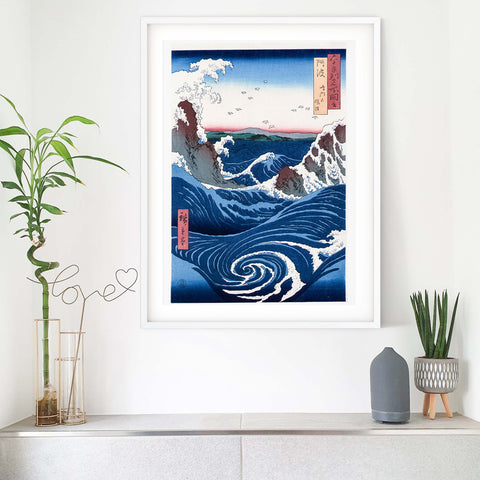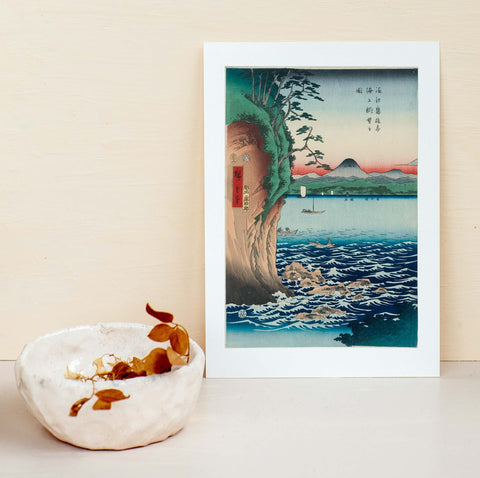Early Life and Influences
Hiroshige, born as Andō Tokutarō in 1797 in Edo (now Tokyo), was one of the final greats in the ukiyo-e woodblock printing tradition. With a fire warden for a father, Hiroshige was introduced to art at an early age, albeit in a modest way. He lost both parents by the age of 12 and became a fire warden himself, a role that afforded him a humble income but plenty of time to indulge in art.
His artistic journey formally began in 1811 under the guidance of Utagawa Toyohiro, an ukiyo-e master. Had he joined the more popular Toyokuni, Hiroshige might have been limited to imitating the artist's theatrical prints. It was Toyohiro's modest taste that led Hiroshige to explore landscape art.
A Late Bloomer Finds His Footing
Hiroshige didn't gain immediate acclaim; his first work wasn't published until 1818, when he was 21. But by the 1830s, he found his true calling—landscape prints. His Fifty-three Stations of the Tōkaidō (1833–34) was a magnum opus that gained him immediate success.
The Journeyman Artist
Hiroshige was a keen traveller. His trips weren't merely leisure activities; they were his lifeblood. Sketches from his travels were turned into prolific series like Famous Places in Kyōto and One Hundred Views of Edo.
The Impact and Legacy
Hiroshige's work later influenced Impressionists like Monet and Post-Impressionists like Van Gogh. He produced more than 5,000 prints in his lifetime, some even reaching 10,000 copies. His style was less audacious than that of his contemporary, Hokusai, but no less impactful.
Life of a Humble Citizen Artist
Beyond his art, Hiroshige was a man of simple tastes. He enjoyed travel, good food, and wine. His life was cut short in a cholera epidemic in 1858, but his legacy and influence endure.
Utagawa Hiroshige: The Quiet Revolutionary
Artistic Beginnings
Hiroshige was a self-made man in many ways. Orphaned young, he found solace and purpose under the mentorship of Toyohiro of the Utagawa school. His early works were deeply influenced by Chinese scroll painting and the Kanō school of Japanese art.
A Different Approach to Landscape
While Katsushika Hokusai's Thirty-Six Views of Mount Fuji held public attention, Hiroshige dared to be different. His Fifty-Three Stations of the Tokaido showed a softer, more relatable view of landscapes and everyday life.
The Economics of Art
Being paid little per series didn't deter Hiroshige; instead, it fuelled his prolific output. He even retreated to monkhood in 1856 to create his final masterpiece, One Hundred Famous Views of Edo.

The Lasting Influence
Hiroshige passed away in 1858, just a decade before Impressionism took hold in the West. Yet his influence lives on, seen in the works of artists like Gauguin and architects like Frank Lloyd Wright.
Hiroshige's work wasn't just about picturesque scenes; it was an intimate look into the beauty of the ordinary. With thousands of prints to his name, he didn't just capture the landscape; he captured the soul of a nation.


